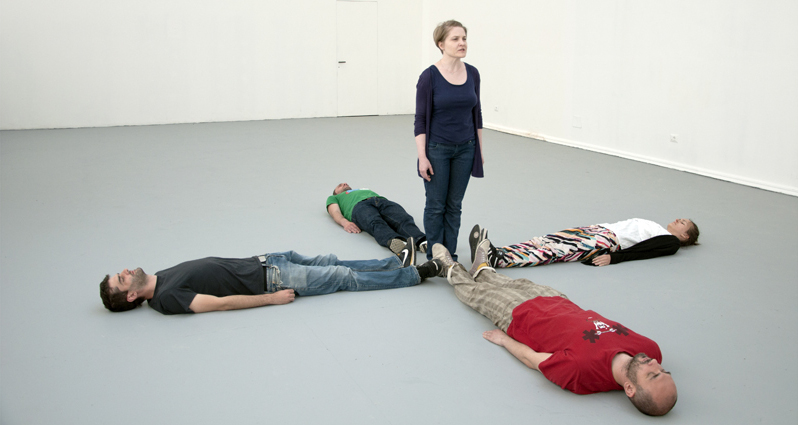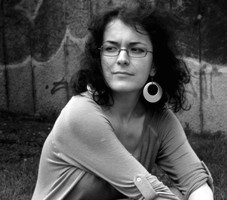Questions for Mica Gherghescu, art historian based in Paris.
What Romanian art events (solo/collective show, artist talk, workshop, festival, biennale, editorial work) in 2014 did you find interesting/decisive in indicating a way, a style, a new area of expertise, or an already known and established area of artistic research and activity? What were the lesser moments in the artistic Romanian art scene of the year 2014? In short why?
What international art event of those you’ve seen or heard of in 2014 did you like best? Was there something you found worthy of attention, special, uncommon, or (on the contrary) was there anything typical and representative, already engraved in the international art scene of 2014? What didn’t you like in 2014?
I would like to recall, from a favorable “outsider” point of view, a few instances of Romanian art presented in the international scene in 2013 and 2014 that received just as good a reception and visibility as the quality of work and the significant place they held not just in a canonical gallery, but in the new position of writing recent art history. I believe that any record, no matter how brief, couldn’t possibly omit mentioning the presence of important names and remarkable projects at the 55th edition of the Venice Biennale. Geta Brătescu’s calisthenics workout captured in the filigree texture of fabric and the textual memory, the diagrammatic and rhizomatic projections by Ştefan Bertalan, as well as the performative complexity of the historic re-enactment, done with a subtle reactivation of the documentary monument that is the venetian history institution, carefully elaborated by Alexandra Pirici and Manuel Pelmuş, these are just a few of the important moments in The Encyclopedic Palace dreamed up by Massimiliani Gioni – they were as an intelligent chant for the profuse ensemble of the general route of the national pavilions. Reverberations travel a long way. Especially in the dynamics of the shows and in the international curators’ increased attention towards the postwar neo-avant-garde in the central-European space, where the Romanian example never cease to amaze. Geta Brătescu’s mental maps, a precious alloy of textile materiality and her conceptualization of the graphical gesture, could be retrieved in another type of scenography, sumptuously orchestrated and stratified by Anne Dressen and Marc Camille Chaimowicz at the Musée d’Art Moderne de la Ville de Paris, as part of Decorum. Tapis et tapisseries d’artistes (2013-2014). The retrospective and immaterial operation reiterated by the duo Pirici & Pelmuş has later graphed itself onto the living body of the history of Centre Pompidou and was transplanted with discipline and choreographic endurance in the Forum of the space projected by Piano and Rogers („Just Pompidou It”, Nouveau Festival, 5th edition). The echoes of these moments are reflected by the necessity to trigger and build, a posteriori, an ample historical and critical adventure that focuses on elaborating basic work tools. Methodologically fundamental gestures (which are, with a few notable exceptions, pretty absent in the Romanian historical landscape), the two artist monographs – Ion Grigorescu, Omul cu o singur cameră / The Man with a Single Camera and Geta Brătescu, Atelierul/ The Studio – recently presented by Alina Şerban along with the collaborators triés sur le volet, edited by Sternberg Press in 2014, fill up the void of critical literature that is so essential in drawing personal routes that are analyzed using the first order source filter resonating with the archive material, as well as evaluating complicated histories under the polyphony of voices that Piotr Piotrowski likes so much.
POSTED BY
Adriana Oprea
Adriana Oprea is an art critic and historian. She has been publishing essays and reviews in Revista 22 and is a collaborator of Revista ARTA since its relaunch in 2010. In 2006 she started working in ...


Comments are closed here.